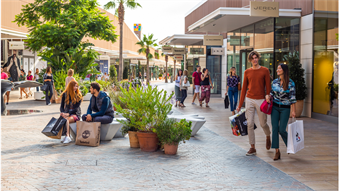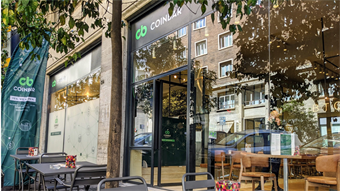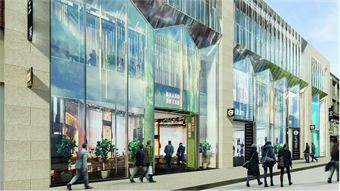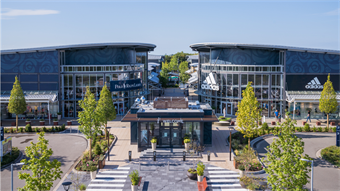Last mile or last 100 metres?
- In Special report
- 08:46, 05 December 2019
- 6244 Views
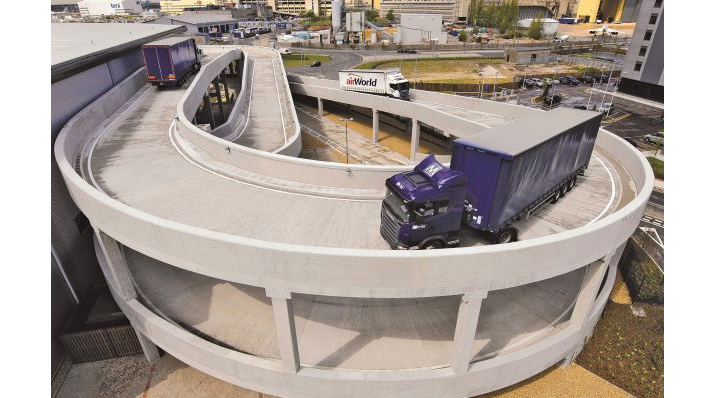
Today’s rapidly changing consumer behaviour offers amazing opportunities, yet at the same time places tremendous pressure on retailers, the real estate industry, and logistics specialists. But though nailing the last mile or even the final hundred metres in logistics is potentially lucrative, is the last-push ecosystem sufficiently innovative?
If you live or work in any one of Europe’s fast-growing cities, there’s a strong chance that you can see a crane towering over the cityscape or you’re a stone’s throw from a construction site shoe-horning in even more residential or mixed-use property.
About 75% of Europeans live in cities today – and with escalating urbanisation that’s set to increase to about 84% by 2050, according to European Commission research. Unprecedented levels of connectivity, unparalleled shifting demographics and the desire to consume what we want as conveniently as possible are among the mammoth trends shaping how we live, work, transact and socialise.
Elie Finegold is an entrepreneur, property expert and venture advisor at New York-based MetaProp NYC – and he’s firmly in the camp that huge change heralds great opportunities. ‘People are going to put capital to work where people are, and density is our destiny,’ he says.
CREATING A NEW NORM?
While opinion is split on calling online retail’s growth trajectory, many retail and e-commerce experts expect that online sales will double as a percentage of total retail sales. That means that over the next decade or sooner, online retail could top 40% in the UK and 22% or higher in Germany, for example.
Len Rosso, head of industrial and logistics at Colliers International, says the logistics market is inevitably moving towards a new norm in terms of speed of delivery as consumers increasingly demand shorter delivery times and immediacy or bespoke delivery slots when purchasing online. ‘There has been a lot of discussion around last-mile logistics and what it means, but how far out of an urban centre does this “last mile” stretch?’ he asks. ‘The sector will continue to transform and advance, and the distribution network will be designed and built more and more to serve consumers’ needs, rather than simply the store network.’
CHANGING SUPPLY CHAIN MODELS
What is the reality of the last push in retail logistics today? The answer invariably differs from one location to the next. But ultimately, many experts concur that it’s about full choice for the consumer. Sometimes people want their parcel delivered to their homes; click and collect may be more convenient and some people pick up goods from a locker in a shop or a gym. ‘Last mile is certainly part of the wider puzzle that retailers need to address and tackle in order to remain relevant and competitive in the current environment,’ says Tjard Martinus, head of EMEA retail research at JLL. That competition is understandably sparking some novel ideas in the logistics community.
In Germany, DHL has innovated by delivering parcels to a shopper’s car boot while the driver isn’t even there. Amazon bought residential door security company Ring, allowing Amazon drivers to unlock a customer’s door and place a parcel inside of someone’s house – and then relock the door of course.
New supply chain models going forward are likely to be typified as faster and smarter, more customer-centric and more sustainable, with digitalisation the all-encompassing wrap-around of those trends, according to Simon McWilliams, head of supply chain consultancy at JLL. ‘The omnichannel experience is core to customer-centricity – we as humans are creating a revolution in terms of our expectations,’ he says. ‘It’s changing what an order is and its size – and the speed at which an order is being processed, which all influence the physical infrastructure.’
Martinus says that in taking a holistic view of retailers’ logistics real estate as well as their retail real estate in terms of how orders are fulfilled, ‘there is a massive opportunity for retailers to become more efficient and gain a competitive advantage while also taking steps forward in terms of sustainability’. However, as much as online retailers are selling goods, consumers particularly love to try on clothes at home and return unwanted goods. The trend in fashion returns was strongest in Germany, followed by the Netherlands and France in 2018, according to research by Swedish postal holding company PostNord.
A POINT OF NO RETURN?
Returns can be crippling for online retailers because it’s very expensive for them and no one really has come up with a solution in an efficient way, says Rosso. There is a view that if retailers could service click-and-collect services from their existing store inventory that would improve efficiencies considerably, but that may be wishful thinking in today’s margin-pressurised market conditions.
‘The problem is that most retailers don’t have visibility of that inventory in their existing stores, so it’s difficult to see how retailers will want to invest in the sort of technology that pinpoints their stock at any given time because they are fighting fires on so many fronts,’ says Kevin Mofid, head of the industrial and logistics research team at Savills.
If consumers want choice, speed, and convenience – and want retailers to appeal to their calls for more sustainable practices – consumers may need to modify their expectations. ‘I think commercial pressures will play out in that space as the pressure to protect margins and profitability increases. Some of those costs will pass to consumers – and we as consumers will have to start to reconsider our needs,’ explains McWilliams.
Some online retailers are innovating by streamlining processes, as evidenced in the concept of frictionless returns. ‘To make the supply chains agile to deal with returns, retailers – John Lewis and Amazon are good examples – need to decouple the returns process from the main distribution operations, taking the returned products back through a different loop,’ notes McWilliams.
In other cases, if the customer won’t go to the store to make returns, then the retailer needs to be super-flexible. For example, French hypermarket group
E.Leclerc normally operates in large, out-of-town locations, but opened a central Lille store to help process returns as well as retailing goods. More goods sold and returned either in store or online logically mean more logistics centres are needed – either across national networks or increasingly in urban areas. But with limited supply of land for logistics and prevailing doubts about the commercial appetite for speculative developments, will the real estate infrastructure keep pace with the growth in online sales?
ALL EYES ON LOGISTICS REAL ESTATE
It’s estimated that about 60-70% of the big box take-up comes from retail, e-fulfilment, and the third-party logistics (3PL) spaces. Increasingly, it all comes back to optimally located logistics real estate – closer to city-based customers – playing a pivotal role in retailers ultimately meeting consumers’ expectations. ‘The growth of online retail fundamentally requires more warehouse space and more warehouses closer to people, which obviously causes a tension in urban areas where occupiers need to locate those warehouses and last-mile facilities,’ says Mofid.
Structural change in consumer behaviour towards online commerce and the advancement of technology have prompted retailers and 3PLs to acquire logistics premises in locations more strategically positioned to future-proof their supply chain operations.
But as urbanisation intensifies, so too does the scarcity of logistics real estate supply. ‘In some London boroughs, for example, industrial land values are much higher than residential land values,’ according to Colliers International’s Rosso. ‘Finding the available stock for logistics is very expensive because a lot of it has been taken up for residential developments.’
With a focus on the UK market, ‘the resulting strong demand has exerted pressure on rents’, he says. The firm’s latest rental research shows prime rents for small and medium industrial units of up to 50,000 square feet increased nationally by an average of 4.2% year-on-year between July 2018 and July 2019. This increase was driven by particularly high rental growth in London (5.2%), the East Midlands (5%) and the South East (4.5%).
THE ONLY WAY IS UP OR DOWN
Unlike in more forward-looking markets such as Hong Kong, New York’s outer boroughs, Shanghai and Seattle where multi-storey logistics centres as high as 20 storeys are operating, Europe is still largely grounded in single-storey facilities. Innovations on this front are gaining ground, however.
Segro owns and operates a double-storey facility called X2 at London’s Heathrow Airport and a multi-storey urban logistics hub called Segro Logistics Park Garonor. ‘We are seeing in some European cities that planning authorities want to intensify use of the industrial land in those locations,’ says Jon Sleeman, head of EMEA industrial & logistics research at JLL. ‘The way you can do this is by building upwards.’
GLP-owned Gazeley announced plans last year to build a 426,000 square feet, three-storey warehouse at Peruvian Wharf – close to London City Airport. But construction at the six-acre site has yet to get underway, possibly due to limited risk appetite for such an asset. ‘The question is whether they are waiting for a pre-let,’ says Rosso.
NEW APPROACHES TO CITY CENTRE LOGISTICS
As part of the ongoing move to deliver hyper-local logistics solutions, logistics companies will need to be creative and flexible in their use of space by repurposing buildings in optimum locations.
REPURPOSING REAL ESTATE
Parcel delivery company DPD’s urban delivery centre in the heart of St James’s in the City of Westminster in London is based in a former Transport for London building, where its city delivery vehicles are stored overnight. While the location for DPD is spot-on, the real estate may not. But as with lots of innovative approaches, this example shows that compromise is often at the heart of innovation, especially in very crowded urban locations.
While DPD’s operation is more environmentally sustainable, it’s also a more economical approach with a hub in the heart of customer density. ‘Fundamentally, repurposing spaces such as car parks can be a compromise for logistics purposes, which companies will make for the space when the location is top-drawer,’ says Kevin Mofid of Savills.
PORTERING: MAKING DELIVERIES ON FOOT
The concept of portering is being rolled out in city centres where traffic and parking are a challenge, and where a driver’s van becomes the hyper-local warehouse – so deliveries are completed by the driver on foot. ‘With the last mile you might be on the edge of the city, but you might need another solution that’s right in the heart of the city – and that might be dealing with the last few hundred metres,’ explains JLL’s Jon Sleeman. ‘With hyper-local distribution, the choice of real estate has to be a compromise because it comes down to what’s available in a given location and not purpose-built facilities.’


